In the Cystometry is a diagnostic procedure in the field of urology. The urinary bladder is filled with saline and contrast medium and the pressure inside the bladder is measured. These measurements are carried out at rest and under stress. Furthermore, the measurements are carried out with different fill values. The results enable therapeutic measures to be tailored to the diagnosis.
What is cystometry?

Cystometry is a procedure for making or excluding a diagnosis in the event of disorders of the emptying and filling of the urinary bladder. The purpose of the procedure is to measure and assess the bladder pressure in relation to the volume and perception of the patient.
The measurement results provided information about the muscle function of the pelvic floor muscles and the sphincter and the neurological function of the nerves. The measurement relates not only to the urinary bladder, but also to the function of the urinary tract.
As a physiological reaction to a full urinary bladder, stimulus impulses are sent to the brain via the nerve tracts to initiate emptying of the bladder. These stimuli can be processed arbitrarily by humans, which means that it is possible to hold the urine for a certain time. If the bladder continues to fill and is not emptied, in spite of the continuous stimulation, the bladder may be emptied reflexively.
However, if the urinary bladder is emptied voluntarily, feedback pulses are sent, which initiate the contraction of the bladder and opening of the sphincter muscle.
If this physiological process is disturbed, it can lead to urinary incontinence or urinary stasis. To analyze and assess the cause of this, the procedure of cystometry is used. The cystometry is often carried out in combination with other examination methods of uroflowmetry.
Function, effect & goals
Cystometry is used for various problems that affect the urinary bladder. This diagnostic method is often used in cases of urinary incontinence, bladder emptying disorders, unclear symptoms such as frequent urination with no or only little urine leakage, backflow of urine from the bladder into the kidney, unclear urinary obstruction and in children who are resistant to therapy when bedwetting. Urination disorders caused by neurological diseases or damage to the spinal cord are also assessed with the help of cystometry.
During cystometry, the bladder pressure is measured during filling. Data on the dynamics of the urinary bladder, the capacity in terms of volume, elasticity and stability are recorded.
Before cystometry can be performed, cystitis must be ruled out, as it is contraindicated for such an examination. In cystometry, a transurethral catheter is then placed through the urethra into the urinary bladder. The urinary bladder is filled with saline solution via this thin catheter. In addition, a transanal measuring catheter is inserted through the rectum. The pressure behavior is continuously recorded via this measuring catheter during the filling and emptying of the bladder. The pressure is measured at rest and under exertion, such as when coughing. The values are recorded as a so-called pressure curve and can be used to determine whether there is a possible disruption in the area of the bladder muscles or the activity of the sphincter muscle.
By assessing the cystometry, forms of incontinence can be excluded and a diagnosis can be made. A distinction is made between stress incontinence, urge incontinence, high pressure bladder, overactive urinary bladder with a possible neurological cause and mixed urinary incontinence. Based on these measurement results and the exclusion of various disorders, an adequate diagnosis-oriented therapy can be carried out. If the measurement results are not meaningful enough, especially in the case of disorders with a neurological background, it is advisable to integrate further examinations in the form of an ice water test or a Carbachol test into the assessment of the cystometry. A pelvic floor EMG is often done to rule out benign prostate enlargement.
When performing cystometries, a contrast medium is usually used to fill the bladder. This also enables a micturition cyture program or video urodynamics. The speed of filling is individual and is divided into 3 levels. The slow filling rate is about 10m / min, the medium filling rate is 10-100ml / min and the fast filling rate is a value of over 100ml / min. It is recommended to start the cystometry with a slow fill rate and then increase it.
Basically, a body temperature fluid is used for general cystometry; only if a neurological cause of the symptoms is suspected, a cold fluid is used to provoke autonomic detrusor contractions. This contraction is physiologically inhibited by the supraspinal centers. If there is no detrusor contraction, this is an indication of a neurological disorder.
The general urinary bladder capacity in women is 250-550ml. For men, a physiological filling volume of 350-750ml is specified.
Risks, side effects & dangers
Basically, cystometry is a very safe and complication-free method for determining a possible disruption of the urinary bladder. Occasionally, however, a urinary tract infection can occur after the procedure.
A so-called autonomic reflex can subsequently occur in patients who suffer from symptoms of a bladder emptying disorder due to a neurological cause. This manifests itself in a severe headache, increased blood pressure, low pulse and profuse sweating. Cystometry should not be performed in patients with an acute urinary tract infection. Drugs that affect the flow of urine and the bladder must be stopped before cystometry is performed. The attending specialist should discuss this with the patient before the implementation and weigh the risks individually based on the medical history and the course of the disease.


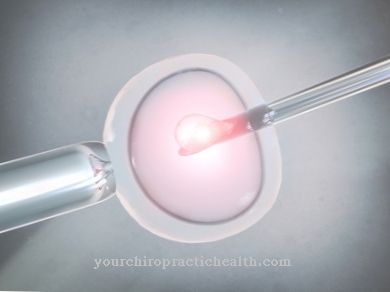
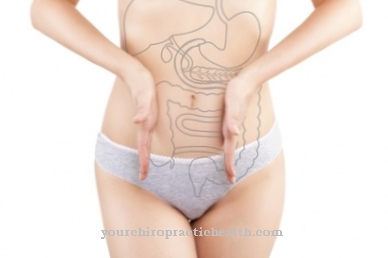
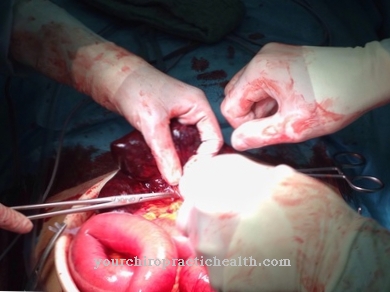
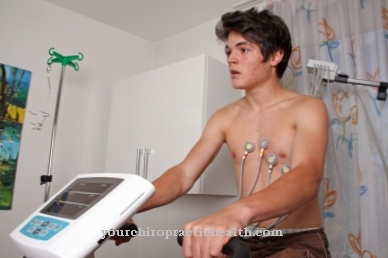
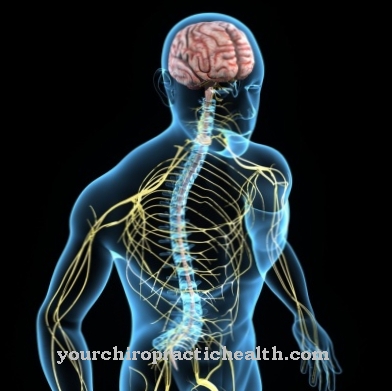


















.jpg)

.jpg)
